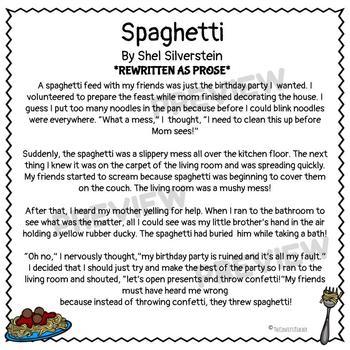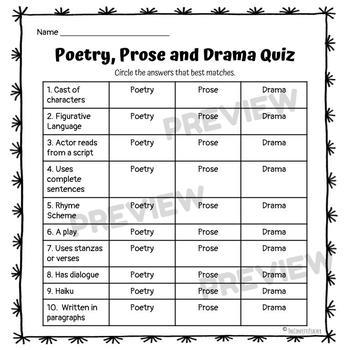Poetry, Prose and Drama RL 4.5
- PDF
What educators are saying
Description
Need a fun way to teach the structural differences between Poetry, Prose and Drama in your fourth grade classroom? This product includes Shel Silverstein's poem "Spaghetti" rewritten as prose and drama. Also included is a quiz, review page, and anchor charts. Use as whole class activity or for small group work. Great way for kids to compare the three types of text!
*Poems come in color and b&w
* NEWLY UPDATED October 2018
Fourth Grade Reading: Poetry, Prose, and Drama Resource.
Covers CCSS RL.4.5 (4th grade)
Explain major differences between poems, drama, and prose, and refer to the structural elements of poems (e.g., verse, rhythm, meter) and drama (e.g., casts of characters, settings, descriptions, dialogue, stage directions) when writing or speaking about a text.
Teachers who purchased this product also enjoyed:





